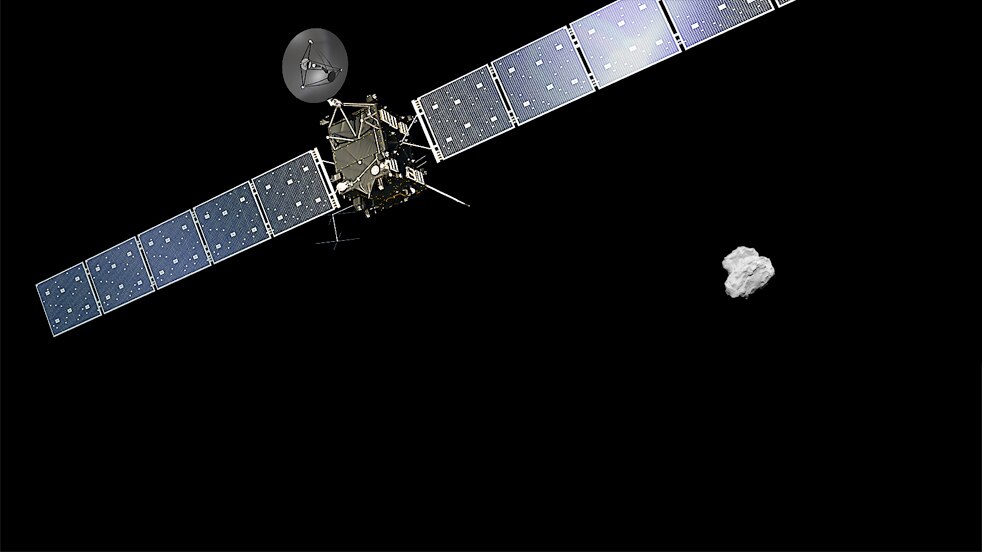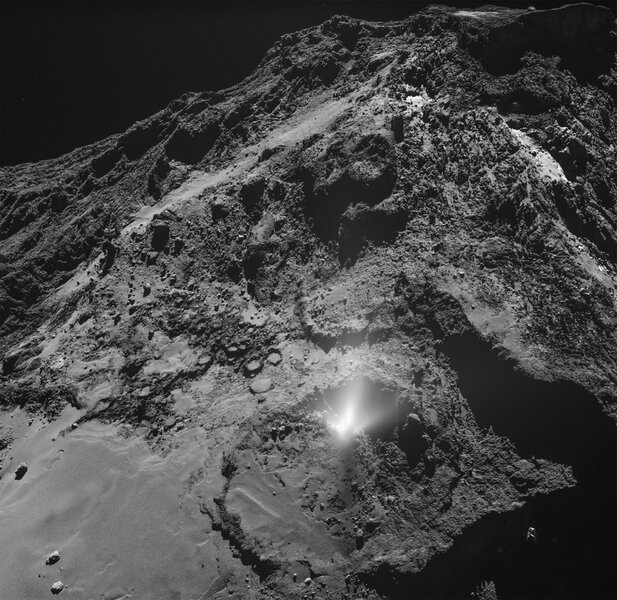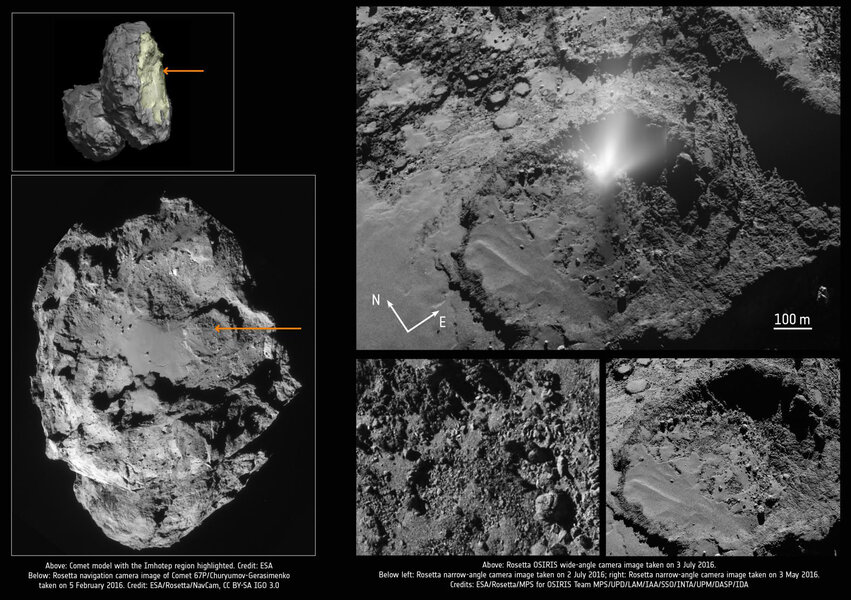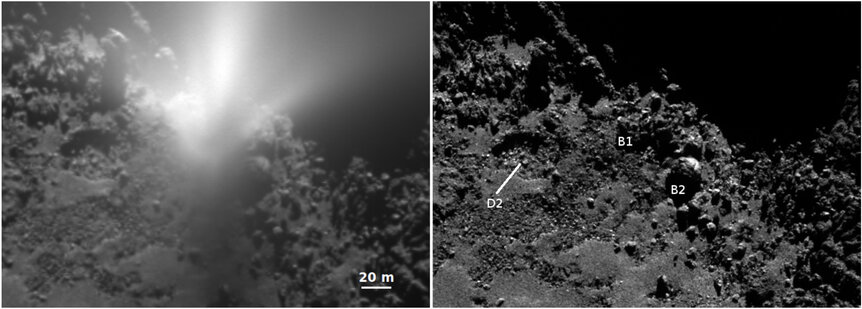Create a free profile to get unlimited access to exclusive videos, sweepstakes, and more!
A plume erupts from a comet, pressured from below

Comets are very interesting beasts. They are lumps of silicate material — rocks, gravel, pebbles, and dust — held together in large part by ice. By "ice" I mean frozen water, carbon dioxide, carbon monoxide, and other things we tend to think of as gases here on Earth.
But comets tend to stay far from the Sun, where such materials are solid. When they approach our star on an elliptical orbit they heat up and the ice turns directly into a gas and streams away. Along with it goes some of the rocky material, forming the fuzzy coma around the solid nucleus, and the tail swept back.
Sometimes that gas comes from ice sitting on the surface, and you get broad fan-like plumes of material blown off the surface. When the Rosetta spacecraft went into orbit around the comet 67/P Churyumov-Gerasimenko in 2014 it saw many such events up close. But up until now I hadn’t seen any like this:
When I saw that I gasped! You can clearly see the plume of material against the comet, and even the shadow below it. With the rugged terrain (cometain?) behind it this makes for a stunning picture.
And it’s an important one. By coincidence not only did Rosetta happen to be at the right place at the right time to see the plume, it also happened to fly right through it! It collected samples of the plume, finding dust particles in it several hundred microns across (a human hair is typically 100 microns thick) and ice particles smaller than one micron.
And that’s actually a problem. Rosetta saw too much dust in the plume; there should be a lot less dust in it for an ice patch near the surface simply heated by sunlight. In other words, some other process below the surface was helping eject this plume.
What could that be? The astronomers studying this data suggest two possible mechanisms. One is that this material came from a pressurized subsurface pocket of ice, which then vented out into space through a crack. Another has to do with what state the ice was in. We’re familiar with ice being a crystal (like snowflakes), but if it’s very cold (like the temperatures of deep space or deep inside a comet) it’s more amorphous, irregular. If the temperature then increases, the ice changes from amorphous to crystalline, and that releases energy. If the ice under the surface did this, that could power the plume as well. It’s not clear which of these mechanisms is what happened.
The plume lasted for somewhere between 14-68 minutes. The rate of material ejected per second adds up to somewhere between 6.5 and 118 metric tons of dust blown out into space! The patch of comet surface it erupted from was about 20 meters across, so this mass corresponds to a layer about 8–50 cm deep. Mind you, the total mass of the comet is around 10 billion tons, so this plume is a drop in the bucket. A comet can have many plumes like this for a long, long time and still stick around (though not forever; over long enough periods of time the comet can lose so much material it simply falls apart).
Interestingly, the plume was detected just six minutes after it emerged into direct sunlight (the comet rotates about once every 12 hours). That means sunlight certainly played a part in getting it started, possibly triggering it enough for the other forces to kick in. Just six months earlier another plume was spotted very close by to it as well. Apparently this is a happening place on 67/P.
Also interestingly, this plume started when the comet was on its way out from the Sun on its 6.44-year orbit. It was about 500 million km from the Sun at the time, farther out than Mars is. It takes time for the warmth of the Sun to makes its way down into the interior of a comet, so many are more active as they move out in their orbits than on their way in.
Like I said, comets are interesting beasts. As comet hunter David Levy once said, "Comets are like cats: they have tails, and they do precisely what they want." In other words, if you’ve seen one comet, you've seen one comet. Every one is different, and sometimes act unpredictably. That’s why studying them, observing them, is so much fun. You never know what you’ll get.

















